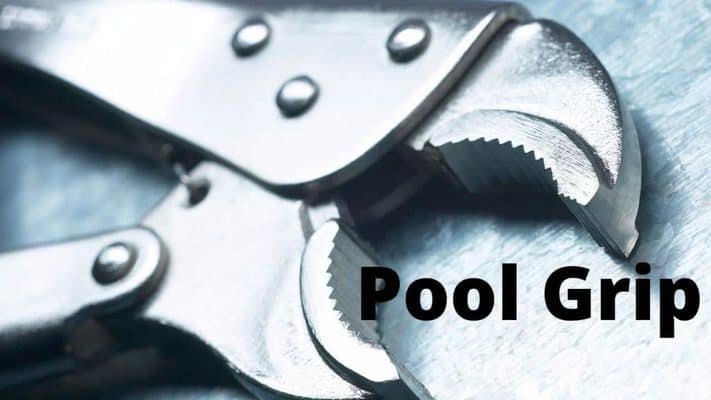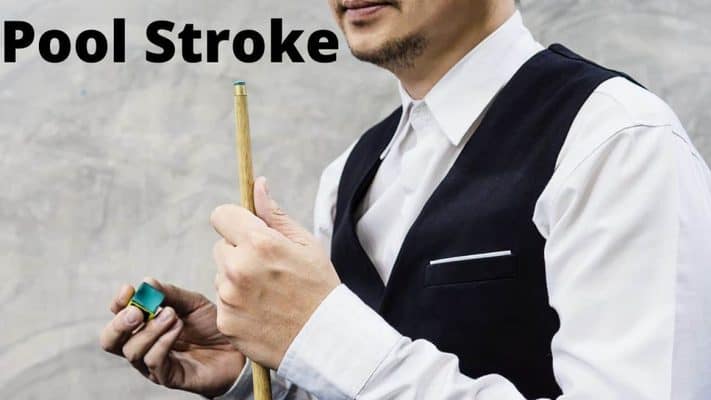In pool, the pendulum stroke and elbow drop piston stroke are frequently utilized techniques. Each has its unique benefits and drawbacks, necessitating players to understand their differences and select one that aligns with their game strategy.
The pendulum stroke involves a fluid, back and forth motion with the arm, mimicking a pendulum. This technique is lauded for its precision and controlled power generation.
Conversely, the elbow drop piston stroke is a more compact, powerful technique. It demands the elbow to drop sharply, creating a swift and vigorous stroke. While this method can produce more force, it requires enhanced accuracy and can be less forgiving if misapplied.
These stroke mechanics vary, catering to different players’ styles and skills.
Introduction To Elbow Drop vs Pendulum Stroke
Both strokes have similarities:
- The stance and foot positions are the same
- The forearm is vertical at ball address
- The chin rests on top of the cue
- The cue may or may not rub against the players chest
- The grip releases slightly on the backswing
The swing through on the final stroke is the main difference.
Pendulum Stroke
The pendulum stroke ends with the hand striking the chest from a pinned elbow position.
With the pendulum, the elbow remains fixed in a high position though out the stroke process.
This stroke has fewer moving parts with the elbow pinned. which in the right hands could be more accurate and efficient. The ball strike takes place with the hand at the lowest point in the pendulum swing.
Piston Stroke
The piston stroke involves a dropping of the elbow with the grip hand often passing beyond the chest during the shot.
The Piston stroke allows for the natural dropping of the elbow on the backswing and follow through.
This stroke involves more moving parts, with both the shoulder and elbow moving. This may require more practice and timing to perfect
Of course, there are many great players who do not drop their elbow from all disciplines of cue sports. They are all equally successful in their careers regardless of the method used.
The Argument For and Against the Piston Stroke in pool
Overview of the divided opinions on whether to drop the elbow or not.
One of the major talking points among pool players is the technique used to deliver the cue, specifically the action of the elbow during the stroke. This is often referred to as the ‘piston stroke’.
The piston stroke in pool refers to the motion of the elbow dropping during the delivery of the shot. Some argue that this technique allows for a smoother, more controlled shot, while others believe it can cause inconsistency in the player’s game.
The Arguments For:
- Increased Power
- Flexibility
- Better Control
The Argument Against:
- Inconsistency
- Difficulty
- Harder to coach
Is the Elbow Drop a Stroke Fault?
Some people even go so far as to refer to an elbow drop as a stroke fault or something that needs to be eliminated from your cue action
I for one do not consider dropping your elbow as being a stroke fault, it is something that I do and in fact it’s something that a lot of really good players do. You don’t need to do it to be a good player, but for some coaches to go so far as to suggest that the dropping of the players elbow is a stroke fault is laughable.
What are the Advantages and Disadvantages of the Elbow Drop Piston Stroke?
I am not in total agreement with all of the items on these two lists.
There may be some truth to the beliefs mentioned below, but many are just opinions based on non empirical evidence.
The cue tip is in contact with the cue ball for such a short period of time that I have my doubts as to the claims that a different stroke can effect ball trajectory or spin.
Once the ball has been stuck, the cue speed is reduced by up to 40%, such an amount, that it can no longer influence the path or action of the cue ball.
Advantages of the Elbow Drop:
1. Increased Power: The elbow drop can help a player generate more power in their shot, which could be useful in certain situations.
2. Better control: When executed correctly, the elbow drop can provide improved control over the cue ball, allowing players to make more precise shots.
3. Improved Spin: The elbow drop can also help players to put more spin on the ball, which can be useful for making tricky shots.
4. Diverse Shots: It allows the player to make a variety of shots that might not be possible with a standard stroke.
5. Break Shots: The elbow drop is particularly useful for making powerful break shots at the beginning of a frame.
6. Cue Elevation: It allows for a higher cue elevation, which can be advantageous in certain shots.
Disadvantages of the Elbow Drop:
Inconsistency: The elbow drop can lead to inconsistency in a player’s stroke, which can make it harder to make accurate shots.
Difficult to Master: The elbow drop is a more advanced technique that can be difficult to master, especially for beginners.
Limited Use: It’s not a technique that can or should be used for every shot, so it might not be a valuable skill for players who mainly need to make straightforward shots.
What are the Advantages and Disadvantages of the Pendulum Stroke?
Advantages of the Pendulum Stroke:
1. Consistency: The pendulum stroke is a simple motion that is easy to replicate, leading to more consistent shots.
2. Accuracy: It helps in maintaining a straight cue, which improves accuracy.
3. Control: The pendulum stroke allows players to better control the speed and direction of their shots.
4. Technique: It encourages good technique, including a stable bridge and a straight follow-through.
5. Power: The pendulum stroke allows players to generate a lot of power, which can be useful for breaking or long shots.
Disadvantages of the Pendulum Stroke:
Comfort: Some players find the pendulum stroke uncomfortable or unnatural. This can lead to tension in the arm and less accurate shots.
Inconsistency: If not executed perfectly, the pendulum stroke can lead to inconsistent results.
Over Power: The pendulum stroke can sometimes generate too much power, making it harder to control the cue ball on delicate shots.
Examples of Successful Billiard Players Using Both Methods
Top 8 From the Pool World
| World Ranking | Name | Country | Elbow Drop |
|---|---|---|---|
| 1 | Joshua Filler | GER | no |
| 2 | Francisco Sanchez Ruiz | ESP | Yes |
| 3 | Fedor Gorst | RUS | Yes |
| 4 | Anton Raga | PHI | Yes |
| 5 | Shane Van Boening | USA | No |
| 6 | Eklent Kaci | ALB | No |
| 7 | Dennis Orcollo | PHI | No |
| 8 | Jayson Shaw | SCO | Yes |
Top 8 From the Snooker World
| World Ranking | Name | Country | Elbow Drop |
|---|---|---|---|
| 1 | Ronnie O’Sullivan | ENG | Yes |
| 2 | Luca Brecel | BEL | No |
| 3 | Mark Allen | NIR | Yes |
| 4 | Judd Trump | ENG | No |
| 5 | Mark Selby | ENG | No |
| 6 | Neil Robertson | AUS | no |
| 7 | Shaun Murphy | ENG | Yes |
| 8 | Kyren Wilson | ENG | No |
Of course there are many great players who do not drop their elbow from all disciplines of cue sports. They are all equally successful in their careers regardless of the method used.
Emphasize that success in cue sports is not solely dependent on the technique used.
Advice for Players who Naturally Drop their Elbow
If you drop your elbow naturally just go ahead and carry on doing so. If its natural for you then trying to change your stroke would be difficult to do. Anyway, why would you change it there are some incredible players who cue exactly the same way with great results.
Advice For Players Who Do Not Drop Their Elbow
You are in excellent company, many great players from today and in years gone by did not drop their elbow but somehow managed to win a World title. Amazing, how did they do it? Mainly by sticking to what was working for them and not listening to others no matter how well intentioned.
Conclusion
There are many different ways of doing most of the technical aspects of pool and snooker. Be flexible while learning how to play this great sport. There are some very opinionated coaches and pundits out there who insist that their way is the best.
Frequently Asked Questions FAQs
Q: What is the difference between a pendulum stroke and an elbow drop?
A: A pendulum stroke is a pool stroke technique where the forearm swings back and forth like a pendulum, while an elbow drop involves dropping the elbow downwards during the stroke.
Q: How does the forearm play a role in the pendulum stroke?
A: In a pendulum stroke, the forearm is the main driver of the stroke. It moves in a smooth back-and-forth motion to generate momentum and accuracy.
Q: Are there any advantages of using a pendulum stroke over an elbow drop?
A: Yes, there are several advantages of using a pendulum stroke. It helps in maintaining a straight stroke, improves consistency, reduces the chances of miscues, and enhances the player’s control over the cue ball.
Q: Can I still use an elbow drop technique while using a pendulum stroke?
A: No, the whole point of a pendulum stroke is to eliminate the downward motion of the elbow during the stroke. It is important to keep the elbow stable and maintain the pendulum motion for optimal results.
Q: What are the common problems associated with dropping the elbow during the stroke?
A: Dropping the elbow during the stroke can lead to inconsistencies in shot accuracy, loss of control over the cue ball, and strain on the shoulder and elbow muscles.
Q: Should the elbow be kept still during the pendulum stroke?
A: Yes, it is crucial to keep the elbow stable and restrict its movement during a pendulum stroke. This helps in maintaining a consistent stroke and minimizing errors.
Q: How does the grip hand play a role in the pendulum stroke?
A: The grip hand helps in maintaining a steady grip on the cue and providing support to the forearm during the pendulum motion. It should remain relaxed but firm to ensure a smooth stroke.
Q: Is it necessary to keep the stroke straight while using a pendulum technique?
A: Yes, keeping the stroke straight is essential for executing a successful pendulum stroke. It allows for better accuracy and control over the cue ball.



